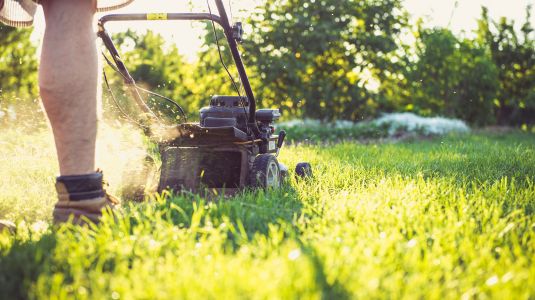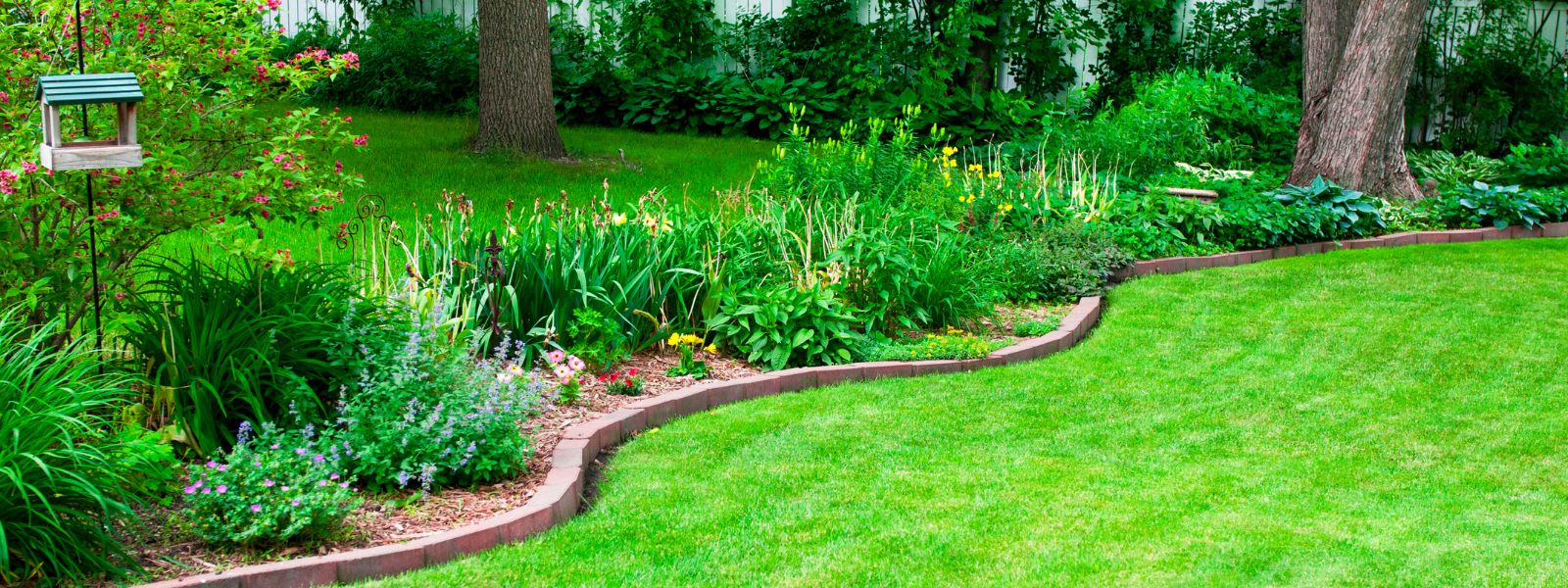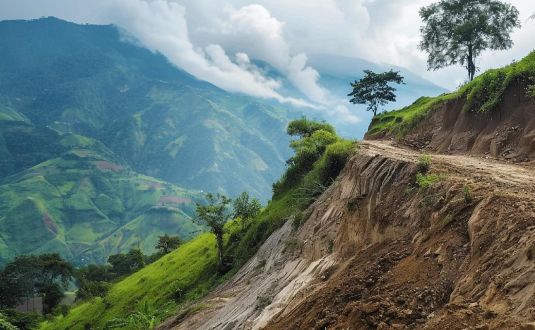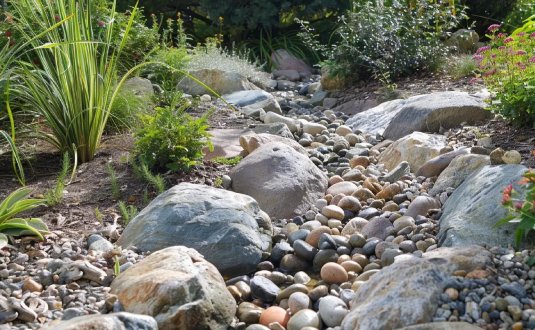Providing Best Services in Huntsville, AL
Providing Best Landscaping Services in Huntsville, AL



.webp)
Best Grass Type for Lawns in Alabama
Bermudagrass is the best grass type for Alabama lawns. This warm-season grass handles Alabama's hot summers and heavy foot traffic. Northern Alabama homeowners can also choose Tall Fescue. The right grass depends on location, soil type, and maintenance preferences .Alabama spans USDA hardiness zones 7b to 9b with summer temperatures above 90°F. Different regions need different grass types for success. The state receives an average of 56 inches of rainfall annually, creating specific challenges for lawn establishment and maintenance.
What Grass Grows Best in Alabama's Climate?
Warm-season grasses grow best in Alabama's hot climate. These grasses thrive in temperatures between 75-90°F and include Bermudagrass, Zoysiagrass, St. Augustinegrass, Bahiagrass, and Centipedegrass. Cool-season grasses like Tall Fescue only work in northern Alabama.
Alabama has three distinct climate regions with different grass requirements. The transition zone in northern Alabama allows both warm and cool-season varieties, while central and southern regions require heat-tolerant options only.
North Alabama (Birmingham and up): Transition zone allows both warm-season and cool-season grasses. Cities include Huntsville, Florence, and Birmingham. Winter temperatures can drop to 15-20°F, making cold tolerance important.
Central Alabama (Montgomery area): Hot summers with mild winters. Temperatures reach high 90s in summer with winter lows around 25-30°F. Best for warm-season grasses only.
South Alabama (Mobile area): Hottest region with longest growing seasons. USDA zones 8a to 9a with winter temperatures rarely below 30°F. Perfect for heat-loving grasses that cannot tolerate freezing conditions.
The growing season length varies significantly across Alabama. Northern areas have approximately 180-200 days of active grass growth, while southern regions enjoy 250-270 days of optimal growing conditions annually.
Which Grass Type Handles Alabama Heat Best?
Bermudagrass handles Alabama heat better than any other grass type. This grass tolerates temperatures above 100°F and recovers quickly from drought stress. Bermudagrass grows actively from late spring through early fall, making it ideal for Alabama's extended warm seasons.
Bermudagrass establishes rapidly from seed, with germination occurring within 7-14 days under proper conditions. The grass develops an extensive root system that can reach depths of 6-8 feet, providing excellent drought tolerance once established.
Common Bermudagrass varieties for Alabama include Tifway 419, Celebration, and Latitude 36. These hybrid varieties offer improved disease resistance and better cold tolerance compared to common seeded types. Professional installation often uses these premium varieties for superior performance.
The grass requires full sun exposure, needing at least 6-8 hours of direct sunlight daily. Shaded areas will thin out and become weak over time. Bermudagrass spreads through both stolons and rhizomes, creating a dense, durable turf that handles heavy foot traffic.
During Alabama's peak summer months, Bermudagrass may need supplemental irrigation. Apply 1-1.5 inches of water weekly during dry periods, watering deeply but less frequently to encourage deep root development.
What is the Lowest Maintenance Grass for Alabama?

Bahiagrass requires the lowest maintenance of all Alabama grass types. This grass needs minimal water and fertilizer once established. Bahiagrass grows well in poor, sandy soils common throughout Alabama, particularly in the coastal plain region.
Bahiagrass demonstrates remarkable drought tolerance, surviving extended dry periods without irrigation. The grass requires only 1-2 pounds of nitrogen per 1,000 square feet annually, significantly less than other warm-season varieties.
The deep taproot system allows Bahiagrass to access moisture and nutrients from lower soil levels. This characteristic makes it particularly suitable for areas with sandy soils that drain quickly. However, homeowners dealing with muddy yards should consider drainage improvements before installation.
Pensacola Bahiagrass variety performs exceptionally well in Alabama conditions. This variety tolerates temperatures down to 10-15°F and recovers quickly from winter damage. Argentine Bahiagrass offers faster establishment but requires more maintenance than Pensacola.
Bahiagrass produces seed heads throughout the growing season, requiring regular mowing to maintain appearance. Mow every 10-14 days during active growth periods, removing seed heads before they mature and spread.
Which Grass Works Best for Shady Alabama Yards?
St. Augustinegrass works best in shady Alabama yards. This grass tolerates partial shade while handling Alabama's heat and humidity. St. Augustine creates thick, carpet-like coverage that crowds out weeds naturally.
St. Augustine performs well with as little as 4-5 hours of filtered sunlight daily, making it superior to other warm-season grasses for shaded locations. The wide leaf blades capture available light efficiently, allowing growth in conditions where Bermudagrass and Bahiagrass struggle.
Popular St. Augustine varieties for Alabama include Floratam, Palmetto, and Seville. Floratam offers excellent chinch bug resistance, while Palmetto provides better cold tolerance for northern applications. Seville works well in moderate shade conditions with improved drought tolerance.
The grass establishes best from sod installation rather than seed. St. Augustine sod should be installed during late spring or early summer when soil temperatures reach 65-70°F consistently. Proper soil preparation prevents future issues with standing water that can damage the shallow root system.
St. Augustine requires regular water during establishment, needing 1.5-2 inches weekly for the first month. Once established, reduce watering frequency but maintain deep, thorough irrigation to encourage root development.
What Grass Type Costs Least to install in Alabama?
Bermudagrass from seed costs least to install in Alabama lawns. Seeding costs $0.10-$0.30 per square foot compared to $0.30-$0.80 for sod installation. Bermudagrass establishes quickly from seed when planted in late spring with proper soil preparation.
Seeding requires less initial investment but demands more time and care during establishment. Successful seeding needs consistent moisture, appropriate timing, and weed control during the germination period. Seeds germinate best when soil temperatures reach 65-75°F.
Tall Fescue also establishes well from seed in northern Alabama, costing approximately $0.15-$0.35 per square foot for materials and installation. This cool-season grass requires fall planting for best results, avoiding summer heat stress during establishment.
Sod installation provides instant results but costs significantly more upfront. Premium varieties like Zoysia sod can cost $0.80-$1.50 per square foot installed. However, sod eliminates the establishment period and provides immediate erosion control and weed suppression.
For large areas or challenging conditions, professional landscaping installation may prove more cost-effective long-term despite higher initial costs. Professional installation includes proper soil preparation, grading, and establishment care.
How do Alabama Soil Types Affect Grass Selection?
Alabama soil types directly affect grass selection and performance. Alabama has seven major soil areas with different drainage, fertility, and pH characteristics. Understanding your soil type helps determine the best grass variety and necessary amendments.
The Coastal Plain region covers much of southern Alabama, featuring sandy soils that drain quickly but require more frequent irrigation and fertilization. These soils work well for Bahiagrass and St. Augustine but may challenge Bermudagrass without proper management.
Central Alabama's Black Belt region contains alkaline clay soils derived from Selma chalk. These soils hold moisture well but may have drainage issues during heavy rainfall periods. Homeowners in this region often need drainage solutions to prevent waterlogged conditions.
Northern Alabama features diverse soil types, including limestone-derived soils in valleys and sandstone-based soils on plateaus. Limestone soils typically have higher pH levels (7.0-8.0) and may need sulfur applications to lower pH for optimal grass growth.
Soil testing reveals pH levels, nutrient content, and organic matter percentages. Most Alabama grasses prefer pH levels between 6.0-7.0. Soils outside this range may need lime or sulfur applications to optimize growing conditions.
Clay soils common in central Alabama hold nutrients well but can become compacted, restricting root growth and water infiltration. These soils benefit from organic matter additions and periodic aeration to improve structure and drainage.
When Should you Plant Grass in Alabama?
Plant warm-season grasses in Alabama from May through July. This timing allows grass establishment before winter dormancy. Cool-season grasses need fall planting from September through October when temperatures moderate.
Soil temperature matters more than air temperature for successful grass establishment. Warm-season grasses need soil temperatures consistently above 65°F for germination. Cool-season varieties require soil temperatures between 50-65°F for optimal growth.
Spring planting allows maximum growing season length for establishment. Grasses planted in May have 5-6 months of active growth before winter dormancy. Late season planting reduces establishment time and may result in winter damage.
Weather patterns affect planting success significantly. Alabama typically receives less rainfall during summer months, requiring supplemental irrigation for spring-planted grass. Fall planting takes advantage of cooler temperatures and more consistent rainfall patterns.
Seed germination rates vary by grass type and planting conditions. Bermudagrass germinates within 7-10 days under ideal conditions, while Tall Fescue may take 14-21 days. Maintain consistent soil moisture throughout the germination period.
For areas with weed infestation problems, address weed control before planting new grass. Pre-emergent herbicides can prevent weed competition during grass establishment.
What are the top 5 Grass Types for Alabama?
The top 5 grass types for Alabama are Bermudagrass, Zoysiagrass, St. Augustinegrass, Bahiagrass, and Tall Fescue. Each grass type offers different benefits for specific Alabama conditions and maintenance preferences.
Bermudagrass: Most popular choice statewide due to heat tolerance and traffic durability. Requires frequent mowing and full sun exposure. Goes dormant in winter, turning brown until spring growth resumes.
Zoysiagrass: Premium option offering soft texture and reduced mowing requirements. Slow establishment from seed makes sod installation preferable. Tolerates light shade better than Bermudagrass.
St. Augustinegrass: Best shade tolerance among warm-season varieties. Creates thick, carpet-like coverage that suppresses weeds naturally. Requires more water than other varieties.
Bahiagrass: Lowest maintenance option suitable for large areas and poor soils. Excellent drought tolerance once established. Coarse texture may not appeal to homeowners wanting premium appearance.
Tall Fescue: Cool-season option for northern Alabama only. Stays green longer during cool weather periods. Requires overseeding every 2-3 years to maintain density.
Centipedegrass also grows well in Alabama but requires acidic soils and specific management practices. This "lazy man's grass" needs minimal fertilization but struggles in high-traffic areas.
How Do you Maintain Alabama Grass Properly?
Proper Alabama grass maintenance requires correct mowing height, fertilization timing, and irrigation management. Each grass type needs specific care schedules for optimal performance throughout Alabama's growing season.
Mowing frequency depends on grass growth rate and season. During peak growth periods, warm-season grasses may need mowing every 5-7 days. Never remove more than one-third of the grass blade height in a single mowing to avoid stress.
Recommended mowing heights:
- Bermudagrass: 1-2 inches for dense, carpet-like appearance
- Zoysiagrass: 1-2 inches but can tolerate slightly higher cuts
Fertilization timing affects grass health and environmental impact. Apply fertilizer when grass actively grows, typically from April through September for warm-season varieties. Avoid fertilizing dormant grass to prevent nutrient runoff.
Split nitrogen applications provide steady nutrition without promoting excessive growth. Apply 1 pound of nitrogen per 1,000 square feet in spring, summer, and fall for warm-season grasses. Use slow-release formulations to reduce leaching and burn potential.
Water management prevents disease while maintaining grass health. Apply 1-1.5 inches of water weekly, including rainfall. Water early morning (6-10 AM) to reduce evaporation and disease pressure.
Thatch management becomes important for dense-growing varieties like Bermudagrass and Zoysiagrass. Dethatch when thatch layer exceeds 0.5 inches thickness to maintain water and nutrient penetration.
What Grass Problems Occur in Alabama?
Common Alabama grass problems include fungal diseases, insect pests, and drainage issues. Alabama's humid climate creates ideal conditions for disease development, while warm temperatures support various pest populations year-round.
Large patch disease affects St. Augustine and Zoysiagrass during cool, wet periods in spring and fall. This fungal disease creates circular brown patches that expand rapidly under favorable conditions. Fungicide applications may be necessary for severe infections.
Brown patch disease targets Tall Fescue during hot, humid summer conditions in northern Alabama. Improve air circulation through proper mowing and avoid evening watering to reduce disease pressure.
Chinch bugs damage St. Augustine grass by sucking plant juices and injecting toxins. These insects thrive in hot, dry conditions and can kill large areas quickly. Monitor regularly during summer months for early detection and treatment.
Spittlebugs affect Bermudagrass and Bahiagrass by creating white, foamy masses on grass blades. Heavy infestations can cause yellowing and stunted growth. Treatment becomes necessary when populations exceed 10-15 bugs per square foot.
Drainage problems create conditions for root rot and other soil-borne diseases. Areas with poor drainage may need professional solutions to prevent ongoing grass loss. Properties experiencing yard erosion require immediate attention to preserve topsoil.
Weed competition reduces grass density and appearance. Pre-emergent herbicides applied in late winter prevent summer annual weeds like crabgrass. Post-emergent treatments target existing weeds during active growth periods.
Which Alabama Regions Need Specific Grass Types?

Different Alabama regions need specific grass types based on climate conditions and growing season length. Northern areas can grow both warm and cool-season grasses while southern regions need heat-tolerant types exclusively.
Huntsville area: Located in USDA zone 7b-8a, allowing Tall Fescue, Bermudagrass, and Zoysiagrass cultivation. The transition zone climate provides 180-200 frost-free days annually, supporting both grass categories.
Birmingham area: Zone 8a climate favors warm-season grasses primarily. Bermudagrass and Zoysiagrass perform best with 200-220 growing days annually. Cool-season grasses struggle during hot summers.
Montgomery area: Zone 8b conditions support Bermudagrass, Zoysiagrass, and St. Augustine varieties. Growing season extends 220-240 days with hot, humid summers ideal for warm-season types.
Mobile area: Zone 8b-9a coastal conditions favor heat and humidity-tolerant grasses. St. Augustine, Bermudagrass, and Centipedegrass thrive in 240-260 day growing seasons with minimal frost risk.
Elevation changes within regions affect local climate conditions. Higher elevations experience cooler temperatures and may support different grass varieties than lower areas. Valley locations often have more moderate temperatures and better growing conditions.
Coastal areas face additional challenges from salt spray and sandy soils. Salt-tolerant varieties like certain St. Augustine cultivars perform better near the Gulf Coast. Soil amendments may be necessary for optimal grass establishment in these conditions.
For homeowners struggling with dead gardens, professional assessment can determine whether poor grass selection or other factors caused the problem.
Should you Hire Professionals for Alabama Grass Installation?
Professional installation works best for large areas, complex drainage issues, and premium grass varieties. DIY seeding works for small areas with simple conditions, while challenging projects benefit from professional expertise and equipment.
Professional installation includes soil testing, proper grading, and drainage assessment before grass establishment. These steps prevent future problems and improve long-term success rates significantly.
Large areas require specialized equipment for efficient preparation and installation. Professional crews complete projects faster and more uniformly than DIY efforts. Sod installation particularly benefits from professional handling and immediate establishment care.
Complex drainage situations need professional evaluation and correction before grass installation. Poor drainage kills grass regardless of variety selection. Professional landscaping design services can integrate drainage solutions with grass selection for optimal results.
Premium grass varieties like hybrid Bermudagrass and Zoysiagrass often require professional installation for warranty coverage. These varieties need specific handling and establishment procedures for successful establishment.
DIY-friendly projects include:
- Small seeded areas under 1,000 square feet
- Simple, flat terrain without drainage issues
Professional installation recommended for:
- Areas larger than 2,000 square feet
- Slopes steeper than 10-15% grade
Professional maintenance programs can help establish new grass successfully while teaching proper care techniques. Many installation companies offer establishment care packages that include watering, fertilization, and pest monitoring during the critical first growing season.
Frequently Asked Questions
What is the most drought-tolerant grass for Alabama?
Bahiagrass is the most drought-tolerant grass for Alabama lawns. This grass survives extended dry periods without irrigation once established. Bahiagrass can tolerate drought conditions for 4-6 weeks during summer with minimal damage.
How much does professional grass installation cost in Alabama?
Professional grass installation costs $1.50-$3.50 per square foot in Alabama. Seeded installations cost less at $0.75-$1.50 per square foot, while premium sod installation ranges $2.50-$4.00 per square foot including labor and materials.
When does Bermudagrass go dormant in Alabama?
Bermudagrass goes dormant when temperatures drop below 40°F for extended periods. In Alabama, dormancy typically begins in November and lasts through March. Northern areas may experience 4-5 months of dormancy while southern regions have 2-3 months.
Can you overseed Bermudagrass with cool-season grass?
You can overseed Bermudagrass with perennial ryegrass for winter color. Plant ryegrass seed in October when soil temperatures drop to 65-70°F. Overseed at 5-8 pounds per 1,000 square feet for adequate coverage.
How long does grass take to establish in Alabama?
Grass establishment takes 6-10 weeks in Alabama under optimal conditions. Seeded grass shows visible growth within 7-14 days but needs 8-12 weeks for full establishment. Sod provides instant coverage but requires 4-6 weeks for root establishment.
For properties requiring comprehensive solutions, professional hardscaping services can complement grass installation with patios, walkways, and retaining walls that reduce lawn maintenance requirements.
Final Thoughts
Bermudagrass remains the best overall grass choice for Alabama lawns due to heat tolerance and durability. This versatile grass handles Alabama's challenging climate while providing attractive, functional coverage for most applications.
Success depends on matching grass type to specific site conditions including sun exposure, soil type, and regional climate. Northern Alabama homeowners have more options while southern areas require heat-tolerant varieties exclusively.
Professional installation eliminates guesswork and provides faster establishment with better long-term results. Consider professional help for challenging sites, large areas, or premium grass varieties requiring specific handling techniques.
Alabama's diverse growing conditions support multiple grass types when properly selected and maintained. Take time to evaluate your specific needs, site conditions, and maintenance preferences before making final decisions for long-lasting lawn success.
Stay Connected and Inspired
Get the latest landscaping tips, seasonal care guides, and exclusive offers delivered straight to your inbox. Don’t miss out on expert advice and ideas to transform your outdoor spaces.
Sign Up for Our Newsletter Today!


Your Next Idea Awaits
Stay inspired with our latest landscaping tips and trends.
.webp)
.webp)

.webp)
.webp)
.webp)
.webp)
.webp)

.webp)








.webp)
.webp)





